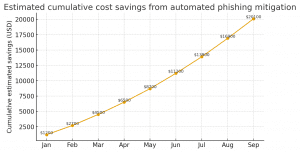Malvertising Campaign Hidden on WordPress Sites: Threat Analysis & Prevention
In an increasingly interconnected digital landscape, WordPress websites remain a prime target for cybercriminals deploying malvertising campaigns. Recently, a widespread attack was uncovered where malicious advertisements were covertly injected into WordPress websites through theme modifications, jeopardizing millions of visitors worldwide.
Understanding Malvertising and Its Impact on WordPress Security
Malvertising refers to the use of online advertising to spread malware by compromising legitimate ad networks or injecting malicious scripts into websites. This form of attack can lead to unauthorized redirects, drive-by downloads, and infiltration of visitors’ devices with malware or phishing scams.
According to a 2024 report by IBM Security, malvertising accounted for approximately 25% of web-based malware outbreaks globally, with WordPress being one of the most frequently targeted platforms due to its widespread usage, powering over 40% of websites on the internet.
Case Study: Infection Through Functions.php in WordPress Themes
A recent incident involved a WordPress website where visitors were unknowingly served suspicious third-party JavaScript. The root cause was traced to a malicious modification in the active theme’s functions.php file, where attackers inserted PHP code that silently retrieved and embedded external JavaScript controlled by threat actors.
How the Attack Unfolded
- Forbidden JavaScript was injected via a hidden function attached to WordPress’s
wp_headhook, ensuring the malicious script loaded on every page. - This function initiated a
POSTrequest to attacker-controlled domains (notablybrazilc.comandporsasystem.com), from which it fetched obfuscated JavaScript payloads. - The dynamic payload employed traffic distribution tactics, serving forced redirects, pop-ups, and a hidden iframe mimicking legitimate Cloudflare scripts to evade security detection.
Indicators of Compromise (IoCs)
- brazilc.com
- porsasystem.com
Technical Analysis of the Malicious Payload
The compromised functions.php file contained a deceptively simple PHP function named ti_custom_javascript() that invoked an external script asynchronously, bypassing Cloudflare’s Rocket Loader interference. This malicious code executed a two-pronged attack:
- It loaded a script from
porsasystem.com/6m9x.js, acting as a traffic distributor that delivered additional malicious scripts facilitating redirects and pop-ups affecting site visitors. - It injected a hidden, 1×1 pixel iframe designed to imitate Cloudflare’s official JavaScript resources, a strategic evasion technique to bypass security solutions and remain undetected.
Why Malvertising Is Particularly Dangerous to WordPress Websites
Malvertising campaigns not only violate user trust but can lead to serious security incidents, including:
- Drive-by malware infections
- Browser hijacking and phishing
- Reputational damage and loss of traffic
- Blacklisting by search engines and security vendors (as noted with 17 security vendors flagging
brazilc.comon VirusTotal)
Proven Strategies to Prevent and Mitigate Malvertising Attacks
Website owners should adopt a multi-layered security approach tailored especially for WordPress platforms, including:
- Regular Updates: Always keep WordPress core, plugins, and themes updated to patch vulnerabilities promptly. Over 56% of hacked websites in 2023 were due to outdated software (WordPress Security Report, 2023).
- Frequent Malware Scanning: Implement server- and client-side scanning with tools that monitor for unauthorized file changes, SEO spam, and backdoors. Schedule scans multiple times daily if possible.
- Strong, Unique Passwords: Enforce complex passwords for all site credentials, including admin, FTP, database, and hosting accounts.
- Log Monitoring and File Integrity Checks: Keep an eye on access logs and enable file integrity monitoring to discover suspicious activity early.
- Deploy a Web Application Firewall (WAF): A WAF can block malicious traffic and brute force attacks, and some advanced firewalls include real-time threat intelligence to filter malvertising attempts.
Additional Recommendations
- Use trusted and regularly maintained themes and plugins, avoiding nulled or pirated software which frequently contains malicious code.
- Implement Content Security Policy (CSP) headers to restrict where scripts can load from.
- Enable Two-Factor Authentication (2FA) on admin accounts.
Conclusion: Vigilance Is Key to Defending Against Malvertising
This recent attack underscores how minimal code modifications in critical files like functions.php can have severe consequences. Attackers cleverly inject malicious JavaScript that appears legitimate, exploiting WordPress’s extensibility and widespread use.
Proactive maintenance, continuous monitoring, and robust security protocols are essential to safeguard WordPress websites from malvertising threats. Integrating security early into your website management lifecycle ensures reduced risk and enhanced trust for both site owners and visitors.
Emerging research from cybersecurity firms, such as Sucuri’s 2025 Web Threat Report, highlights increasing sophistication in malvertising campaigns, further emphasizing the need for layered defenses and rapid response capabilities.



